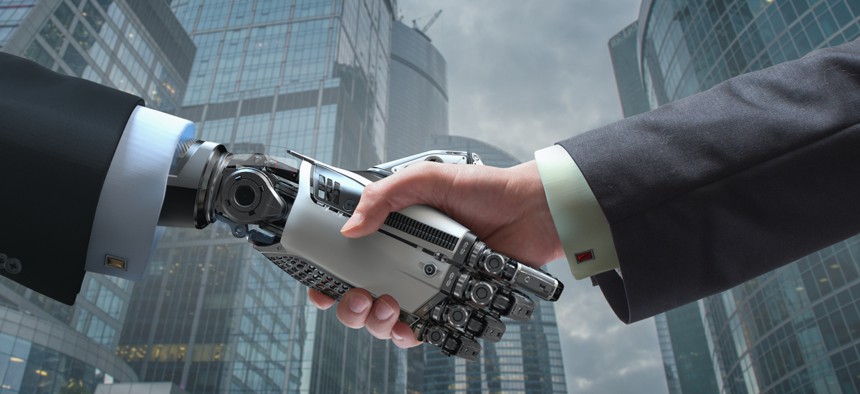How Many Robots Does It Take to Replace a Human Job?

Willyam Bradberry/Shutterstock.com
A new study looks at how recent technology innovation has affected workers thus far.
Last week, Treasury Secretary Steven Mnuchin said he wasn’t worried at all about advancing artificial intelligence taking over jobs anytime soon. In fact, he said, he wouldn’t be worried about it for for another 50 to 100 years.
As I wrote recently, many experts would disagree with the notion that displacement—or at the very least, shifts—in the labor market due to automation are that far afield. Recent studies from McKinsey and the economists Carl Benedikt Frey and Michael A. Osborne estimate that around 45 percent of workers currently perform tasks that could be automated in the near future. And the World Bank estimates that around 57 percent of jobs could be automated within the next 20 years.
In a new paper, two economists—Daron Acemoglu, of MIT, and Pascual Restrepo, of Boston University—endeavor to answer the question of what an increasing number of robots will mean for workers. Acemoglu and Restrepo look to the (recent) past, studying how the increased use of industrial robots affected local labor markets between 1990 and 2007. These robots, defined as machines that are fully autonomous and can be reprogrammed for a variety of tasks, from welding to painting, increased fourfold between 1993 and 2003 in the U.S. and Europe. According to some estimates there are now more than 1.5 million such machines operating in just these two continents—a number that could grow to between 4 to 6 million in less than a decade.
Those numbers prove that changes are already happening, and those changes can be instructive for the future. The study’s authors find that the addition of one robot per 1,000 workers reduces the employment-to-population ratio (the number of people actually employed in an area divided by the number of people of working age) by 0.18 to 0.34 percentage points, and reduces wages by between 0.25 and 0.5 percent. On the low end, this amounts to one new robot replacing around three workers. The impact is unsurprisingly most pronounced in manufacturing (particularly in the production side of the auto industry), electronics, chemicals, and pharmaceuticals, among others. Perhaps most importantly, there were negative effects for virtually all workers except managers.
While the findings might seem grim for workers, the authors note that just because an industry can automate doesn’t mean that it will. The choice to automate isn’t always the right one for companies, and it’s often dependent upon a host of other considerations, including cost. How the economy responds to greater automation is largely determined by how technological advancements happen and where they’re implemented. As many scholars note, more advanced robots in the workforce could mean a shift in human labor, rather than the eradication of it.





